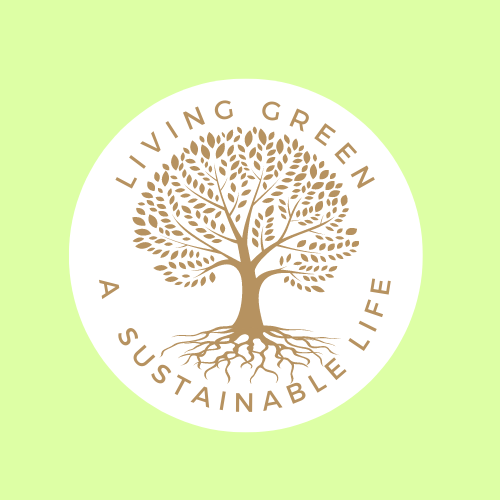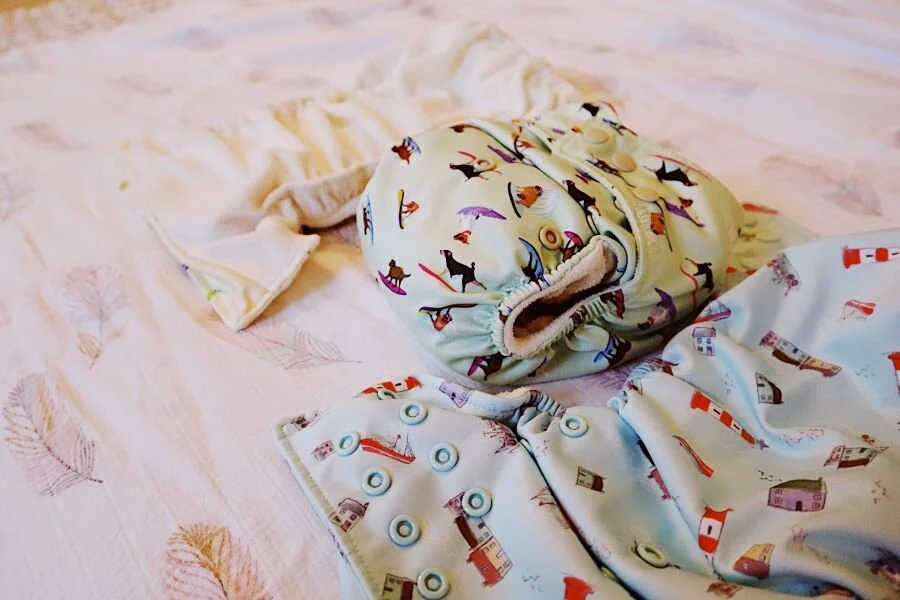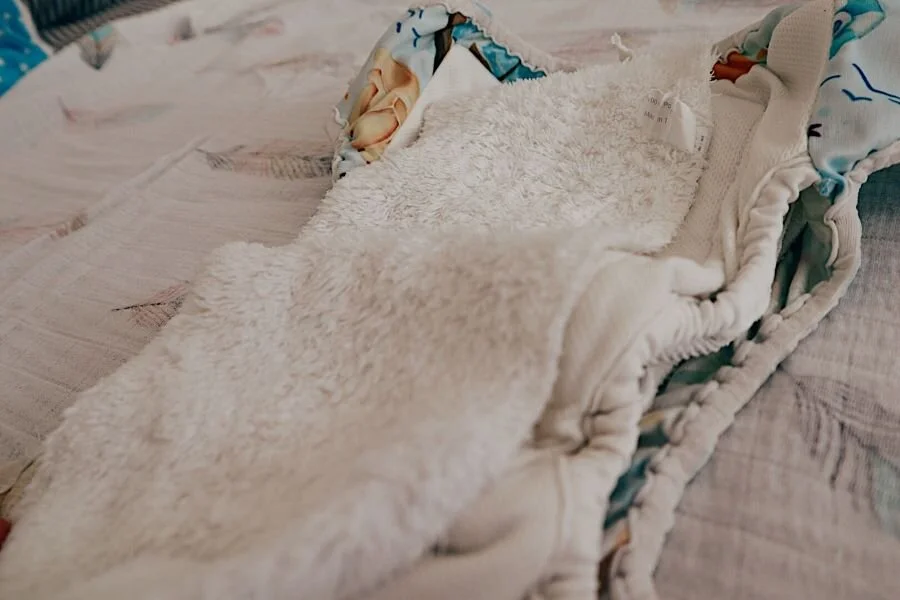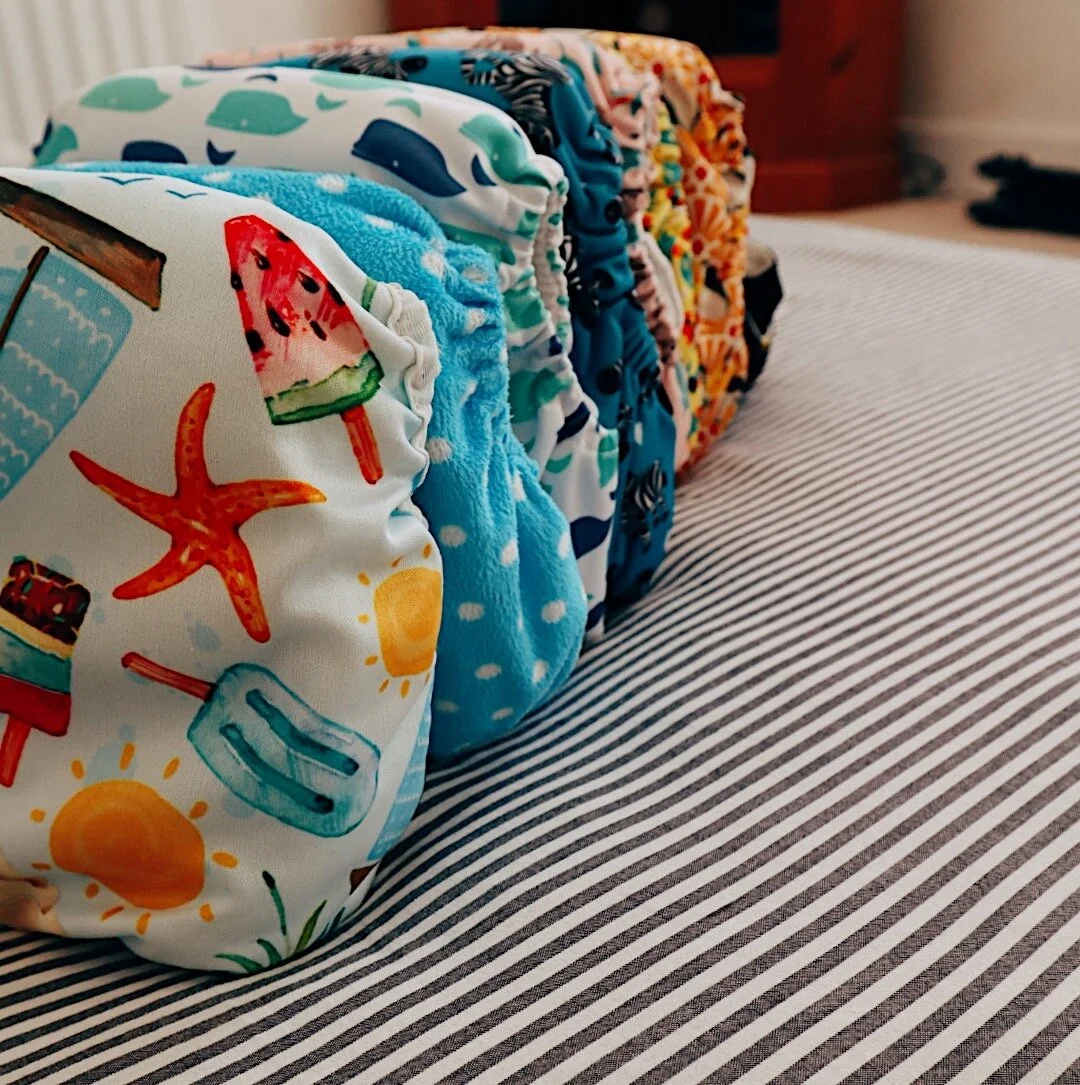Inserts, Boosters and Liners for Cloth Nappies. The full guide.
The world of cloth nappies/diapers can be a daunting one. Why? You buy a reusable nappy, pop it on babies bottom, wash it, repeat right? Well yes and no. The problem with cloth nappies (or a pro once you get your head around it) is that there is a lot of choice out there. Beginning with what style of nappy you might want to use to the material inside the nappy. All have their benefits and sometimes disadvantages.
To make it less daunting I’ve put together this simple guide to break down what materials are in inserts, boosters and liners for cloth diapers and why you might want to use each one, to help you decide what is best to buy.
Inserts and boosters are the absorbent layer in your cloth nappy. These come in serval different materials depending on your preference of how much they hold and their sustainability credentials. Liners are simply used to catch any solids.
Most nappies you buy will automatically come with an insert (unless stated they are a nappy cover or wrap). Some may come with two inserts if you need to double up and boost the nappy however most of the time you will need to buy additional boosters if you find your child needs it.
THE DIFFERENCE BETWEEN INSERTS AND BOOSTERS.
Essentially inserts and boosters are the same thing. Both used in a cloth diaper to absorb urine. However an insert is usually referred to as the main absorbency that comes with a nappy and a booster is used as an extra to “boost” absorbency.
MATERIALS WITHIN INSERTS AND BOOSTERS..
The main materials used in inserts and boosters are microfiber, cotton, bamboo and hemp. Microfiber being the least absorbent and hemp being the most. But all have their positive and negatives.
WHAT ARE THE BEST cloth nappy BOOSTERS TO BUY?
Microfiber maybe the least absorbent but it doesn’t mean it doesn’t have it’s place. It dries quickly which is why I keep Bambino Mio solos in my nappy stash. These prove very useful when your late hanging out the washing or it is a damp autumn day, rubbish for drying. I can grantee I won’t run out of nappies if I have quick drying ones in my stash.
Microfiber in also useful if you have a child that floods their nappy. This often happens when they are getting closer to potty training, holding their wees for longer and then flooding their nappy. This is because microfiber acts like a sponge, absorbing very quickly but will then squeeze out if compressed. You can therefore pair it with a slim more absorbent booster.
Down sides are it’s a man made material made from plastics.
Cotton is more the middle ground. Absorbs and holds a decent amount, dries reasonably quick, easy to buy organic cotton in the cloth nappy market if that makes a difference to you.
Cotton works well in muslins and pre-folds as these fold out to dry quickly and are a nice soft material to have on babies bottom.
Bamboo is in my opinion the best of the choices for cloth nappy inserts. It is versatile because it is not to bulky, very absorbent and a sustainable material. Often inserts such as Baba and Boo ones are a bamboo and cotton mix or a micro fiber/bamboo mix. This works well because the cotton or micro fiber absorb liquids quickly were as bamboo with hold them better.
Bamboo is also a good option for boosters for example Little Lambs bamboo boosters because they are very slim but still absorbent. This means that adding extra boosters will not bulk out the nappy to much.
Hemp is the most absorbent of all the cloth nappy materials but is slower at drying and a stiffer material. I therefore find it a great option for nighttime when they are moving less and being changed less. Ella’s House Bum Huggers and their boosters are the slimmest and most absorbent I have found.
HOW DO YOU KNOW WHEN TO BOOST CLOTH NAPPIES?
If your nappies are leaking, the inserts are fully soaked and your fit is good then it’s probably time to boost your nappies with extra absorbency. The need to boost may come and go as your child gets older and their needs change.
For example newborns wee a lot because they have a purely liquid diet. I found I needed to boost and change my newborns frequently. This need changed as they started eating solids and drank less milk. It changed again as they got older and did big wees.
Boosting will depend on the individual and consist of some trail and error.
Read: “5 Steps to Leak Free Night”
WHICH BOOSTER ARE BEST TO USE FOR NIGHT TIME CLOTH NAPPIES AND HOW TO USE THEM.
As I mentioned above I find the best boosters for night time cloth nappies are either Little Lamb Bamboo or Ella’s House Hemp Boosters. I use these with a fitted nappy with a cover/wrap over the top. To avoid any boosters you may add compromising the fit of the nappy (creating gaps, leaving it open to leaks) I like to place the booster between the nappy and the wrap. I also feel this makes it more comfy for the baby.
If some of the above sounds like weird jargon to you have a read of “Modern Cloth Nappies Explained.”
Does it matter which order you layer boosters and inserts?
I have always layer my inserts with the least absorbent closest to babies bottom with booster furthest away but essentially it doesn’t really matter. Unless you have an older child that floods a nappy it is useful to put microfiber closest to their bottom, but otherwise don’t loose any sleep over it.
WHAT ARE CLOTH NAPPY LINERS?
Cloth nappy liners are placed inside the nappy to catch solids and if they are fleece liners wick moister away from babies skin. Fleece liners are reusable.
Though many parents when starting with reusable nappies like the idea of disposable paper liner and feel they must be 100% necessary for catching poo, making it easier to clean I have found the very opposite is true. Human waste should not go into the bin so even if using a disposable liner you should be shaking any solids off into the toilet, this is also true for disposable nappies though it is not commonly known and most baby poo ends up in landfill. You then need to dispose of the single use liner meaning you probably put it in a nappy bag, defeating the point of trying not to create waste in my opinion which is why I choose not to use them. Washable liners however can go in with the nappy wash and nothing different needs to be done.
I also found that while fleece liners with wick moister away from babies bottom as well as catching the poo, disposable paper liners clung to babies skin and made them feel wet.
DO I NEED TO USE A LINER IN MY CLOTH NAPPY?
It is personal preference weather you use a liner in cloth nappies. Fleece liners are only necessary if the nappy does not have a stay dry or fleece layer to keep moisture off babies skin.
However once baby has began weaning liners having a liner does make poop removal an easier process. Simply shake the liner over the toilet of hold into the flush if it is harder to remove. Before weaning milk poo is water soluble and can go straight into the wash with no rinsing.
Not all nappies will need a fleece lining as many, such as pocket nappies with have a fleece or stay dry layer sown in, some will not. If there is no fleece you need to add a fleece liner. This keeps baby feeling dry and will help prevent nappy rash.




















How many cloth nappies will you need to go full time and ditch the disposables for good?